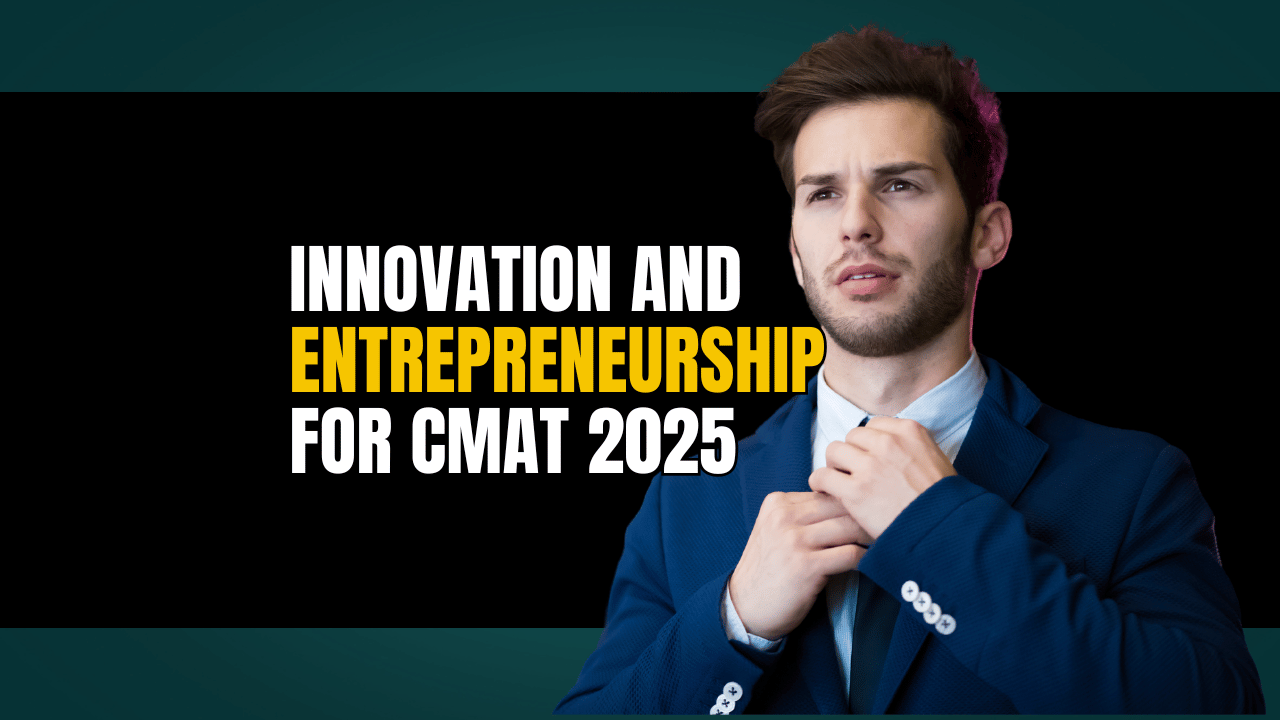Currently Empty: ₹0.00

The “Innovation and Entrepreneurship” section in the CMAT (Common Management Admission Test) exam holds significant importance as it assesses candidates on their understanding of entrepreneurial concepts, creativity, and innovation-related topics. This section reflects the increasing emphasis on entrepreneurial skills and innovative thinking in modern business and management education.
Importance of This Section:
- Relevance to Modern Business:
- Innovation and entrepreneurship are key drivers of business success in today’s competitive environment. Understanding these concepts is essential for aspiring managers and business leaders.
- Encourages Creative Thinking:
- This section evaluates a candidate’s ability to think out of the box, identify opportunities, and develop solutions—skills that are critical in both entrepreneurship and managerial roles.
- Promotes Entrepreneurial Mindset:
- With a growing focus on startups and self-employment, this section encourages candidates to develop an entrepreneurial perspective and understand how innovation contributes to business growth.
- Practical Applications:
- Questions in this section often test real-world applications, such as recognizing successful business models, problem-solving techniques, and strategic decision-making in entrepreneurship.
- Aligns with Academic and Industry Trends:
- Many management institutes prioritize innovation and entrepreneurship in their curriculum. By including this section, CMAT ensures candidates align with these academic and industry demands.
- Career Opportunities:
- A strong understanding of this section can benefit candidates aiming for roles in business development, product innovation, strategy, or even starting their own ventures.
Topics Typically Covered:
- Basic Concepts:
- Definitions and differences between innovation and entrepreneurship.
- Types of entrepreneurship (social, corporate, small business, etc.).
- Key characteristics of entrepreneurs.
- Processes and Models:
- Stages of innovation.
- Entrepreneurial ecosystems and funding mechanisms (e.g., venture capital, angel investors).
- Business models and startup strategies.
- Famous Case Studies and Examples:
- Questions about notable innovators and entrepreneurs.
- Success stories and lessons learned from startups.
- Government Policies and Initiatives:
- Schemes supporting startups and innovation (e.g., Start-up India, Atal Innovation Mission).
- Trends in Technology and Innovation:
- Emerging technologies like AI, blockchain, and their role in entrepreneurship.
- Role of innovation in industries such as healthcare, education, and fintech.
Tips for Preparation:
- Study Successful Entrepreneurs: Learn about notable innovators and their contributions.
- Understand Current Trends: Be updated on emerging business trends, technologies, and government initiatives.
- Practice Case Studies: Analyze entrepreneurial success and failure case studies.
- Mock Tests and Quizzes: Practice CMAT-specific questions to improve speed and accuracy.
Click here to Download Question Bank, that can be asked in CMAT 2025 Exam!
Focusing on this section not only enhances CMAT scores but also provides long-term benefits for careers in management, business, and beyond. Are you preparing for CMAT? If yes, I can guide you with some tailored preparation strategies!
For more preparation guides, You can connect with us!




